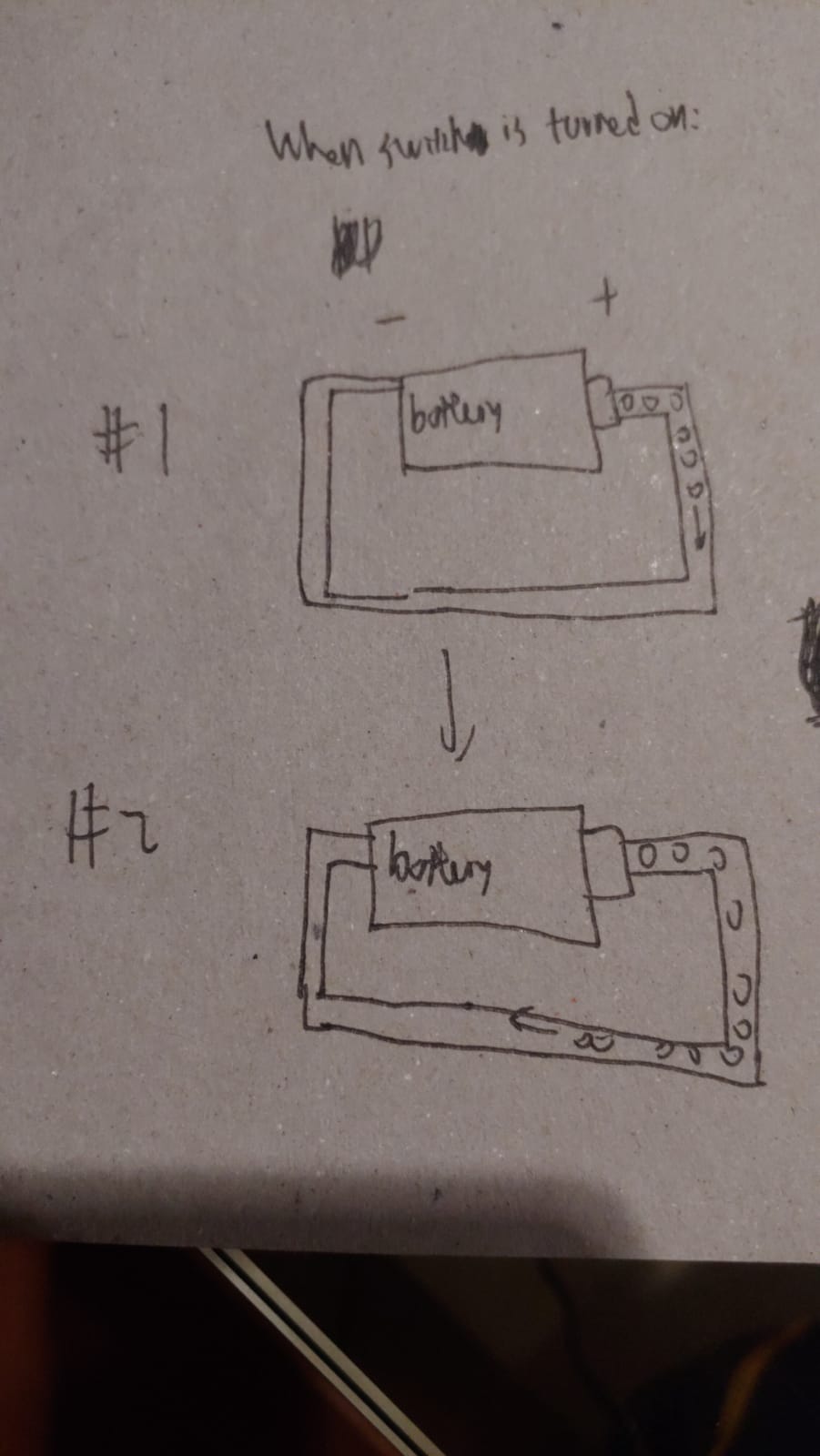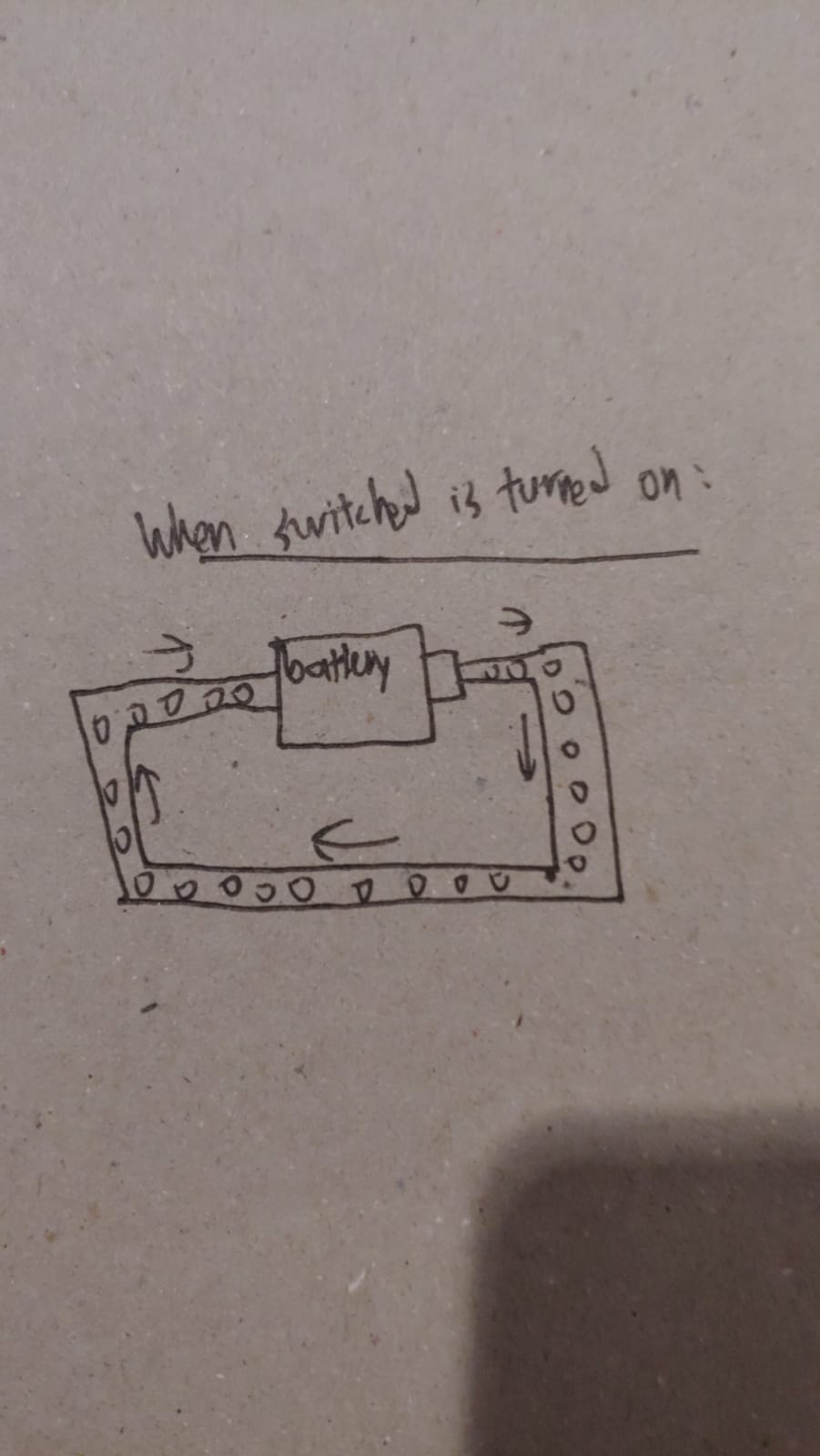Question: Regarding Electron flow in circuits
Hi y’all.
I’m addressing a misconception that I feel many people (even some year 6 students) have about circuits.
We are told that “Electrons flow through the wires in a circuit, from the negative terminal of the battery to the positive terminal of the battery”
So intuitively it’s easy to think of electrons as water, and when the switch is turned on and current flows, electrons flow, like water, from one end of the battery, through the wires (which are like a pipe), into the other end of the battery. The wires are “empty” and have no electrons before current starts flowing.

This is wrong.
The wire is made of metal atoms. Metal atoms have (delocalized) electrons. So there are electrons present in every part of the wire, regardless of whether current is flowing or not.
When the switch is turned on and current starts flowing, every electron in the circuit moves. So instead of being water in a pipe, the electrons are really more akin to pieces of luggage on a baggage claim conveyor belt. When there is no current, the conveyor belt isn’t turning and every piece of luggage is stationary. When there is current, the conveyor belt turns on, every piece of luggage on the belt starts moving at the same time.

